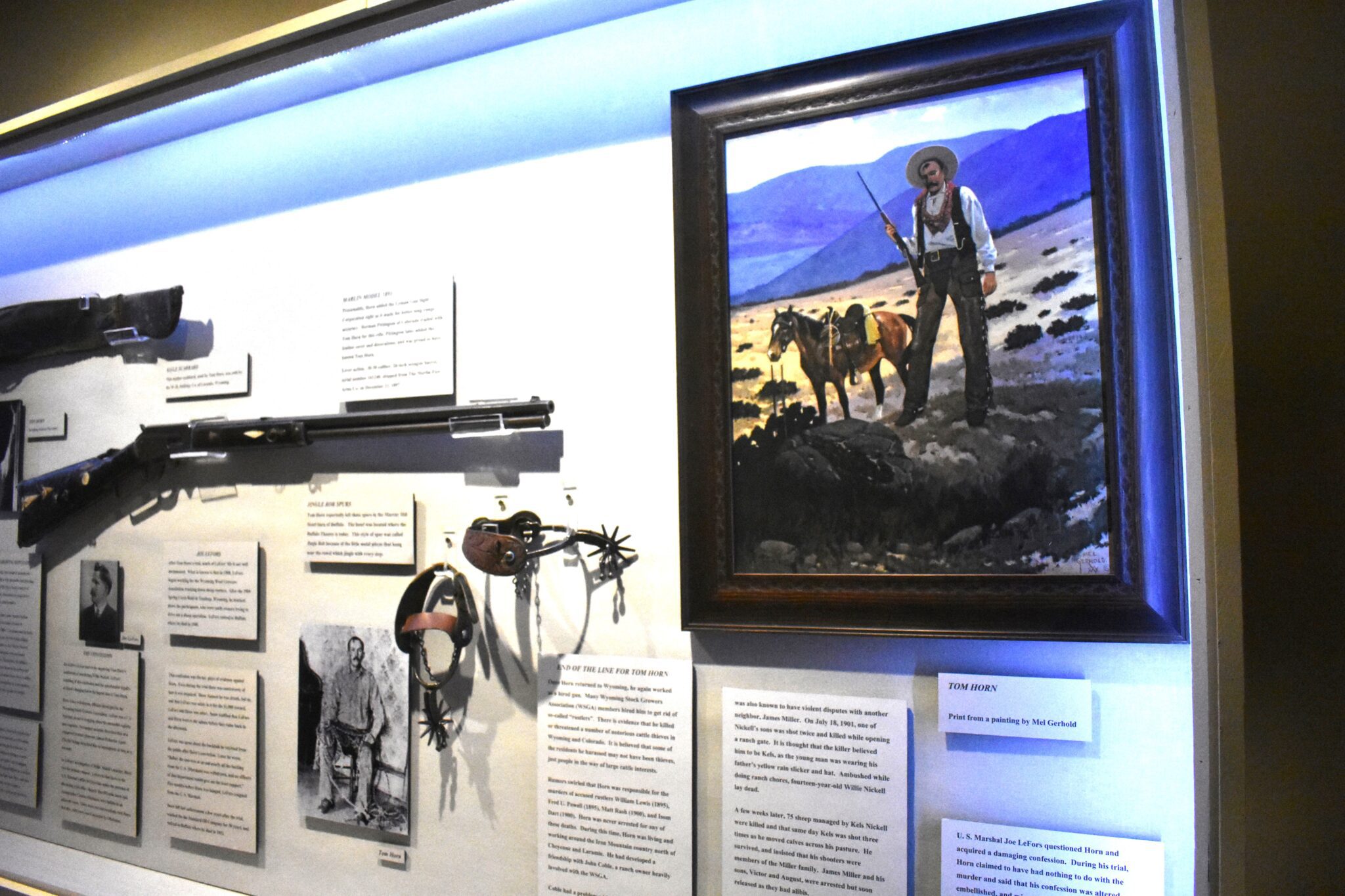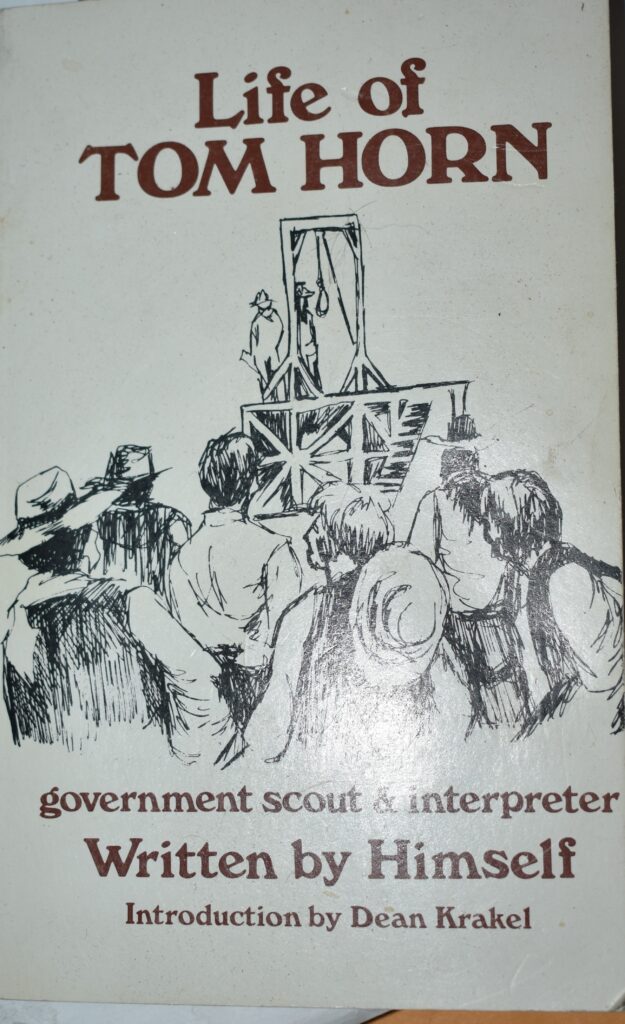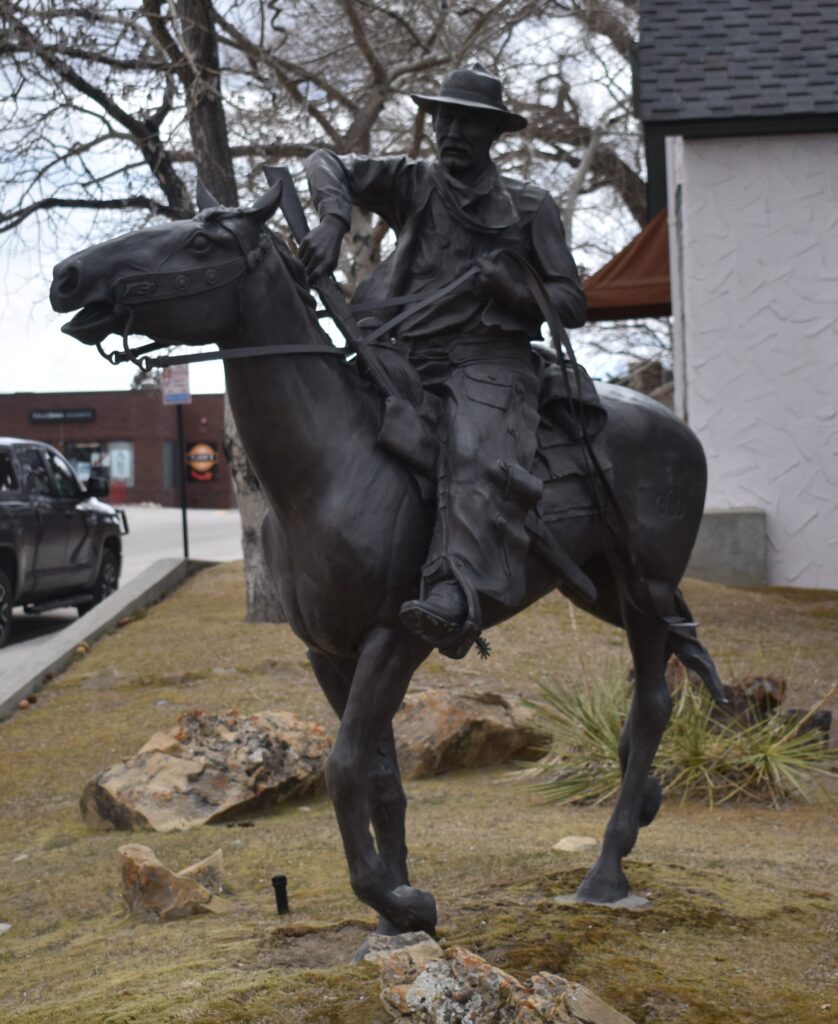News
History: Tom Horn’s Trial and Hanging

In this last history column about Tom Horn, we will go into his sentencing, and the book he wrote while he was being held in the Laramie County Jail. Horn had his defenders as well as those who felt he was guilty.
In this column we will look at both sides of his trial.
Cheyenne Daily Leader, November 12, 1902 –Death Sentence Imposed Upon Convicted Murderer This Afternoon
“It is ordered, adjudged and decreed that you, Tom Horn, be taken from hence to the jail of Laramie county; there confined until the 3th day of January, 1903, on which day between 9 o’clock in the forenoon and 3 o’clock in the afternoon, you will be taken by the sheriff of Laramie county to a place prepared by him, and there hanged by the neck until you are dead.”
This afternoon at 2 o’clock Judge Scott overruled the motion for a new trial in the Tom Horn case and imposed the death penalty upon the prisoner. When the fatal words were being said which pronounced his doom Tom Horn, the stoic, the man convicted by twelve men of assassinating in cold blood fourteen-year-old Willie Nickell, at Iron Mountain, on, July 18 1901.
Horn stood without a muscle of his face moving, absolutely impassive without the least outward indication of emotion, unless it be that the pallor of his cheeks caused by his long months of confinement grew slightly deeper.
Tom Horn must Hang. So said the twelve good and true men of Laramie county, and so has said the Distinct judge who tried the case. There is but hope left, but one loop hole through which the condemned murderer, rapidly approaching his doom, can crawl, and that is the state supreme court. At the conclusion of the sentence today the attorneys for Horn gave notice of an appeal to the state supreme court.
However, the appeal was not successful and Tom Horn’s life ended at the gallows on Nov. 20, 1903.
Wyoming Tribune (Cheyenne), November 20, 1903 – Tom Horn Is Dead! He Died As Might Be Expected, With Courage, Coolness and No Sign of Faltering.
The drop fell at exactly four minutes after eleven o’clock The visitors were admitted to the jail room at about a quarter to eleven o’clock, the newspaper men being admitted to the upper corridor and the other visitors to the lower corridor. After a wait of about five minims Horn appeared in the door of his cell. A moment later Deputy Proctor said “All right.” and Horn started out, turning as though to see if he had left anything behind.
As he stepped out of the corridor, Deputy Proctor said to him. “Tom. the Irwin boys are here and want to sing to you.” “All right, I’ll be glad to hear them.” The two brothers, who were standing almost immediately beneath Horn, then sang the old song with which Horn was perfectly familiar. “Keep Your Hand Upon the Throttle and Your Eye Upon the Rail.” Horn listened intently, his hand resting upon the corridor rail.
He was dressed in a red and white striped negligee shirt, open at the neck a corduroy vest, dark trousers and low slippers. At the close at the singing the two boys mounted to the upper corridor and bade their old friend good-bye. Horn and Charlie Irwin spoke a few words in regard to the delivery of letters which Horn had spent the morning in writing.
Made No Confession. Irwin then said to Horn. “The only thing I want to ask you is, did you make a confession to the preacher?” “No,” was the answer. Both men then said, good-bye. Irwin adding, “It’s coming to all of us.”

While in prison, Horn wrote the story of his life, “Life of Tom Horn, Government Scout and Interpreter, Written by Himself, Together with His Letters and Statements by his Friends.” Published by The Louthan Book Company, Denver, in 1904. Reprints can still be purchased today.
Cheyenne Daily Leader, April 6, 1904 – Cheyennese generally have been of the opinion that the final chapter of the Tom Horn case had been written, discussed and relegated to the past but such Is not the case. Within a few days the Louthan Publishing company of Denver will issue Horn’s story of his own life, together with letters by his friends and chapters by John C. Coble and Gwendolene Myrtle Kimmell. The advance sheets’ of this book have been issued and abound with hot passages, exciting scenes, charges, accusations etc. The letters that Horn wrote just before going to the scaffold and his letter to C. .T. Ohnhaus are included.
An unpublished letter is one written by Horn to Coble, asking him to go to Denver and see Frank Muloch, who Horn says, was paid to come with two other men to Cheyenne to his trial and swear to a lie, and Horn says he wants Coble to find out who gave them the money to swear his life away. Gwendolene Kimmell, the schoolteacher who was friendly to Horn and who figured so sensationally in his trial, has a chapter covering “Horn as I Know Him,” and charging directly that Victor Miller killed Willie Nickell, the crime for which Horn died, and that the Miller boy told her he killed the Nickell boy.
Her chapter is, in the main, an expansion of her affidavit, but it has some warm statements and direct charges and a fierce castigation of Governor Chatterton who refused to pardon Horn.
The publication of the book has been given to the Louthan company by John C. Coble, the Wyoming cattleman and Horn’s life-long friend Coble wrote the preface, published Horn’s letters to him and adds a “closing word.” In his preface Coble, after severely attacking the newspapers, which, he says, seized like greedy newsmongers on every scrap of sensationalism to point a lurid picture of Horn as a fiend, continues: “I wish to repeat, Tom Horn was seldom profane. “This assertion can be sustained by those who really knew him, a fact which alone serves to disprove that the so-called ‘famous confession,’ the language of which smacks so very much more of those who edited the notes that were taken on the spot.”
In closing he says: “In your hands is the book. For it is asked a dealing without prejudice; for its writer is asked that which during his closing years was denied him.” Horn’s direct contribution to the book, aside from his numerous letters, consists of full account of his life up to the time of his Wyoming difficulty, The account of the trial, of his stay in jail and his letters cover this portion.
This story is of his earlier days, his scouting service with the United States army in Arizona, his bringing Geronimo to General Miles and the subsequent surrender of the Apache chief. He tells also of several of his daring exploits, his fights with Indians, his part in the war with Spain, and Charles Horn, a brother, tells of his funeral.
Al Sieber, a scout friend, tells of Horn during the Indian wars. J.C. Coble’s “closing word” contains some matter very abusive of prominent Wyoming citizens. He says: “And it has not been the press alone, but there have been men in positions of trust, pulled up with their little brief authority, who have besmirched their trust and stooped to odious means for selfish ends. If it be true that kings play at chess with nations for pawns, then it is as true that Wyoming politicians play the game of justice with human souls for pawns, and, I may add, with cowardice as referee.”

“I am convinced and I reassert it to be true that Tom Horn was guiltless of the crime tor which he died, nor am I alone in this behalf. He suffered the death, but thereis a great and final referee in all matters of justice.
Miss Kimmell’s chapter describes Horn’s drunken condition at the time of the confession to LeFors, saying he had been drinking for four days and was practically in a stupor when his confession was taken. Speaking of Horn’s reputation, she says: “His main weapon was his reputation as a killer. He himself carefully fostered his reputation, for, as he said: “That is my stock in trade.” Dropping in on a family for the night, he would relate bloody tales of his deeds, killing Indians, and his daring and for days after his departure not a calf would be stolen in the neighborhood.”
Speaking of who really killed Willie Nickell, she says; “After the second session of the coroner’s, inquest I heard three conversations between Jim and Victor Miller, in each of which conversations statements by both incriminating Victor Miller as the murderer of Willie Nickell were made. Twice afterward Jim Miller acknowledged to me that Victor had confessed to him the killing of the Nickell boy, and on October 10, 1901, Victor Millerhimself confessed to me that he was the murderer. I agreed to say nothing about Victor’s criminality, provided they would make no attempt to sidetrack the crime on Horn or any other innocent person.”
One of the hitherto unpublished letters of Horn is that to Coble, relative to securing testimony in Denver. Horn said: “I think it you would go to Denver and see Billy Loomis that he could get an affidavit from F. Frank and W. Muloch showing that Muloch was hired to swear to anything that was put into his mouth and that Stoll and I hired him to do so.”
Writing to Charles J. Ohnhaus, the stenographer who took the notes on Horn’s confession, Horn said “You and I and Snow and La Fors and Stoll all know that you changed your stenographic notes at the instigation of some one, from what was actually said to what you wanted me to say.
“There are too many men mixed up in this business that know the truth, and it will sooner or later come out.” Horn’s last letter to Coble tells all he knows of the killing of the Nickell boy, in which Horn says that Bllly McDonald and Miller asked him to go in on the job, saying they were going to “kill all the Nickel outfit,” and that he refused to have anything to do with it. Later he refused to talk to them, knowing that they would tell him of the murder. He closes by saying; “This is the truth, as I am going to die in ten minutes.”
The book is called a “vindication” of Tom Horn and the manuscript is to be used in this form by Coble for that purpose. The pictures include those of Horn and some of his immediate relatives, but nothing of a gruesome nature. It is not expected that the “vindication” will create much of a sensation In Wyoming.
Like the old-time outlaws, including the Dalton Gang members, who were displayed and photographed after they were killed, newspaper and curiosity seekers were anxious to view Tom Horn’s remains.

Cheyenne Daily Leader, November 21, 1903
Was Horn guilty or innocent of the Nickells murder? After 121 years, we will probably never know.
Feature photo display at the Jim Gatchell Memorial Museum, Buffalo.


Guy Sweatt
March 4, 2025 at 11:05 pm
It is my understanding that Tom Horn was exonerated of the murder he was hanged for. The state of Wyoming finally admitted the truth.